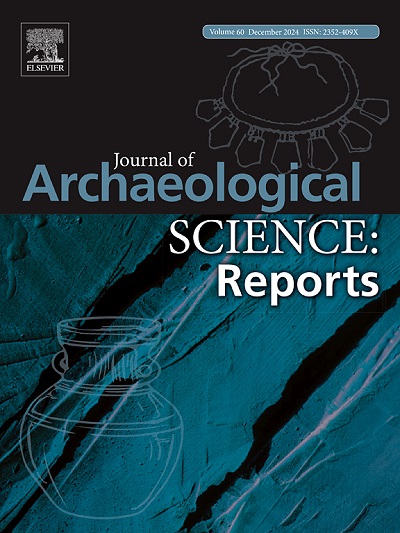Detecting the clue of rice cultivation through phytolith analysis during the Peiligang culture period (ca. 8000–7000 yr BP) in the Luoyang Basin, Central China
IF 1.5
2区 历史学
0 ARCHAEOLOGY
引用次数: 0
Abstract
Agriculture has been fundamental to social development and the origins of civilization. Rice (Oryza sativa), an important crop in the Neolithic Central Plain, is thought to have reached the Songshan area from southern China as early as the Peligang culture period, around 8000 yr BP. However, it remains uncertain whether rice was cultivated during the Peiligang period in the Luoyang Basin, located to the north of the Songshan area and a pivotal region in the development of Chinese civilization. This study employed phytolith analysis to investigate the development of rice agriculture in the Luoyang Basin during the middle-late Peiligang culture period (ca. 8000–7000 yr BP). The findings reveal the presence of rice bulliform phytoliths dating back to ca. 7900 yr BP, and morphometric analysis of these phytoliths suggests that rice may have been undergoing domestication. Additionally, two intervals of increased precipitation and subsequent wetland expansion occurred during the periods of ca. 7450–7350 yr BP and ca. 7200–7000 yr BP, which expanded the land area suitable for rice cultivation. Consequently, two corresponding phases of intensified agricultural activity were observed during these intervals, accompanied by population growth in the Luoyang Basin during the late Peiligang culture period (ca. 7500–7000 yr BP).
洛阳盆地培里岗文化时期(约8000-7000年)植物岩分析发现水稻种植的线索
农业是社会发展和文明起源的基础。水稻(Oryza sativa)是新石器时代中原地区的一种重要作物,据认为,早在距今8000年左右的培里岗文化时期,水稻就从中国南方传到了松山地区。然而,在洛阳盆地,位于松山地区的北部,是中国文明发展的关键地区,是否在沛里岗时期种植水稻,仍然是一个不确定的问题。本文采用植物岩分析方法对洛阳盆地培里岗文化中晚期(约8000 ~ 7000年)水稻农业的发展进行了研究。这些发现揭示了距今约7900年的水稻球状植物岩的存在,对这些植物岩的形态计量学分析表明,水稻可能正在经历驯化。在7450 ~ 7350年BP和7200 ~ 7000年BP期间,出现了两个降水增加和湿地扩张的间歇期,扩大了适合水稻种植的土地面积。因此,洛阳盆地在培里岗文化晚期(约7500-7000年)出现了两个相应的农业活动强化阶段,并伴随着人口增长。
本文章由计算机程序翻译,如有差异,请以英文原文为准。
求助全文
约1分钟内获得全文
求助全文
来源期刊

Journal of Archaeological Science-Reports
ARCHAEOLOGY-
CiteScore
3.10
自引率
12.50%
发文量
405
期刊介绍:
Journal of Archaeological Science: Reports is aimed at archaeologists and scientists engaged with the application of scientific techniques and methodologies to all areas of archaeology. The journal focuses on the results of the application of scientific methods to archaeological problems and debates. It will provide a forum for reviews and scientific debate of issues in scientific archaeology and their impact in the wider subject. Journal of Archaeological Science: Reports will publish papers of excellent archaeological science, with regional or wider interest. This will include case studies, reviews and short papers where an established scientific technique sheds light on archaeological questions and debates.
 求助内容:
求助内容: 应助结果提醒方式:
应助结果提醒方式:


